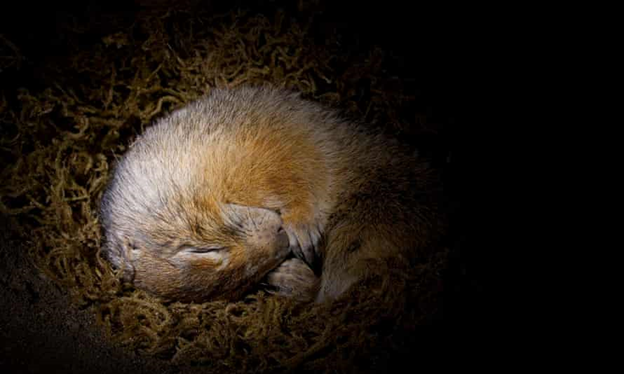We all need our rest, but too much lounging around can be tough on our bodies. We humans can lose up to 14% of our muscle power when confined to bed for just 10 days.
Hibernating animals are a different story, however. Ground squirrels don’t waste away during Jack Frost’s tenure—they manage to build muscle at the end of their winter slumbers, even with no fuel from food.
A new study reveals how. Bacteria in the squirrels’ guts help the animals recycle waste to provide the building blocks for muscle—the first time intestinal microbes have been shown to play this role in hibernation.
It’s a “really exciting” study that “clearly shows a role for microbes,” says Kelly Drew, an expert on metabolism in hibernating animals at the University of Alaska, Fairbanks, who was not involved with the work. The possibility of harnessing the microbiome to treat muscle wasting in people seems attainable, Drew says.
To find out how hibernating ground squirrels hold onto their muscles, researchers at the University of Wisconsin (UW), Madison, investigated the role of a waste chemical called urea. The body needs nitrogen to build new muscles, which usually comes from food. Previous studies have suggested hibernating ground squirrels get their nitrogen by recycling urea. Just how they do this has been unclear, however.
So the team injected ground squirrels with urea containing a form of nitrogen that could be tracked throughout the body. Some of the labeled nitrogen made its way into the squirrels’ livers, intestines, and muscles.
But when the researchers used antibiotics to weaken the squirrel’s gut microbiomes—the community of bacteria that lives in the intestines—the animals couldn’t convert nearly as much urea into useful building blocks. Less labeled nitrogen found its way from urea into the intestine, liver, and muscle in these squirrels than in those with healthy microbiomes. Ground squirrels rely on urea-recycling gut microbes for the nitrogen they need to build muscle during hibernation, the team concludes today in Science.
When a squirrel goes into hibernation, its gut microbes also lose access to regular meals. Microbes in hibernating squirrels responded to this by cranking up their ability to process urea, the team found, getting more efficient at recycling as hibernation progressed. The squirrels help the microbes out by transporting more urea to the gut. The microbiome keeps plenty of the recycled nitrogen for itself, but it also releases some for the squirrel to absorb and use.
The microbes that live in the human gut could likely also recycle urea, says Fariba Assadi-Porter, a biologist at UW who co-authored the study. Even though we don’t hibernate, many people experience muscle deterioration because of aging, illness, or malnutrition. Space-faring humans also lose muscle without gravity to exercise against, she notes. With a better understanding of how microbes salvage urea in squirrels, researchers could someday develop treatments to enhance the human microbiome’s ability to prevent muscle wasting, she says.
But this will require further studies to identify and understand the microbes that recycle urea, Drew says. “That is going to be the next step to really harness this for biomedical applications.”





















